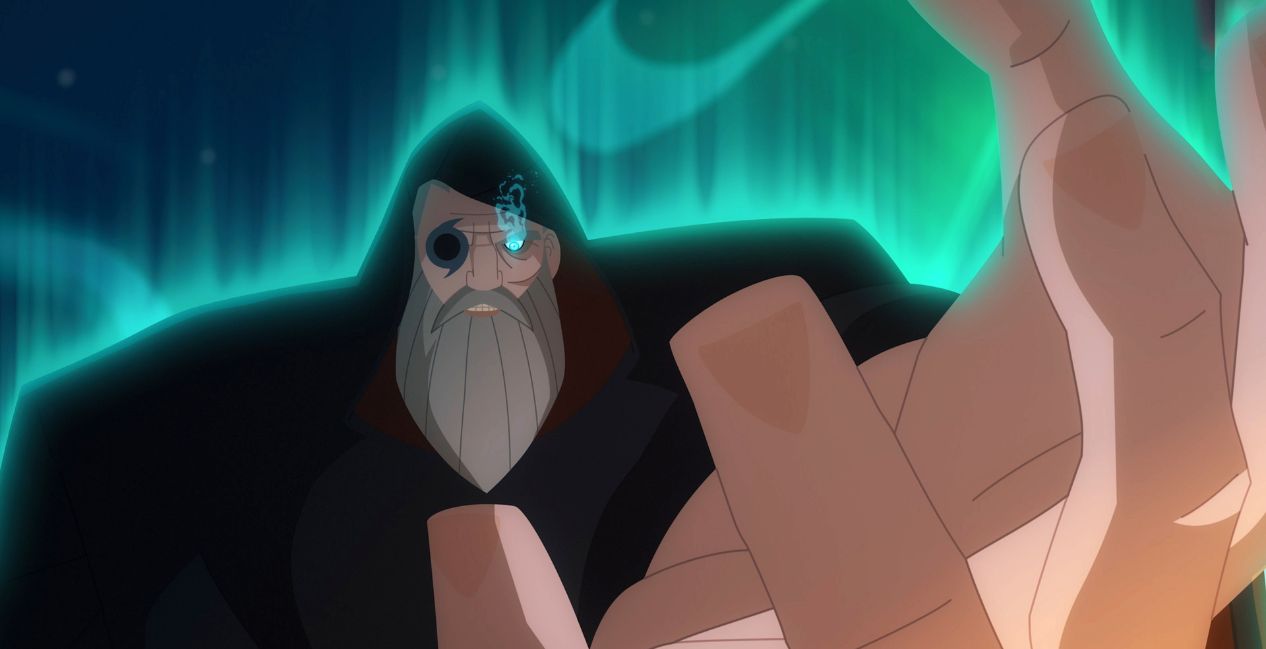SPOILER WARNING: This piece contains some spoilers for Twilight of the Gods Season One
Zack Snyder‘s highly anticipated animated series, Twilight of the Gods, is a thrilling reimaging of Norse mythology. Set in a brutal yet visually stunning world, this Netflix original brings mortals, mythical creatures, and gods together for a truly epic tale packed with brutal battles, drama, and complex characters. Twilight of the Gods utilizes the rich tapestry of mythological references to explore many themes while offering a fresh take on iconic Norse figures.
This guide will cover everything you need to know about the series. From the heroes and their foes to the significant themes and mythological inspirations, this show is a must-see for fantasy and mythology fans.
The Plot: An Epic Quest for Revenge

Twilight of the Gods centers on the mortal King Leif and his soon-to-be queen, Sigrid, a fierce warrior. The two fall in love with one another after she saves his life on the battlefield. As they prepare to wed, the two travel to Sigrid’s home, Jötunheim, the land of the giants, where Leif learns Sigrid has giant blood in her veins despite her human appearance. Sigrid’s father, Glaumar, King of the Open Hand Giants, approves of their wedding, but just as the couple prepares to be wed, Thor appears to cast a dark cloud on her day in his search for Loki.
Thor is displeased by the giants’ response and flies into a rage. Massacaring all of Sigrid’s family and clan in a matter of minutes. Believing that there were no survivors, Thor takes his leave. When Leif and Sigrid awaken, they learn of her clan’s fate. Consumed with grief and rage, Sigrid swears to kill Thor.
Suddenly, Sigrid is dragged to Hel, where she meets the trickster god Loki. Loki offers to help Sigrid in her quest for revenge. Loki’s directions set Sigrid and her comrades on a journey that could put Ragnarok into action. Sigrid and Leif’s epic tale of love, loss, and revenge takes them and their comrades across deadly battlefields and mystical land, where they face gods and monsters on the way to Asgard.
Pays Homage to Norse Mythology

Zack Snyder’s Twilight of the Gods truly captures the beauty and brutality of Norse mythology, paying homage to the rich tapestry of its source material. Rather than sugarcoating or diluting the myths, the series embraces their complexity, showcasing the savage and poetic aspects of these ancient figures and stories. Thor’s character in the show is a prime example of this balance.
Unlike the more sanitized version of the god of thunder in other media, this Thor is more faithful to his mythological roots. He is quick-tempered, ruthless, and fiercely violent. However, as the series progresses, Synder and his team intentionally reveal Thor’s complexity. Beneath his warrior exterior lies an internal struggle that only a select few notice, hinting at a deeper conflict that adds layers to his character. This nuanced depiction of Thor allows the series to fully capture the splendor and grit of Norse myths.
Our Heroine

Sigrid, the heroine of Twilight of the Gods, is a complex and multifaceted character whose journey of vengeance against Thor and the gods of Asgard drives much of the series’ emotional weight and story. On the surface, Sigrid is a fierce warrior with beauty and battle prowess, but beneath her hardened exterior lies a character filled with emotional depth and inner conflict. As a half-giant, half-human, Sigrid has always felt out of place, never fully belonging anywhere. That is true until she travels to her homeland, meets Leif, and finally finds a place where she fits. However, her quest for revenge pulls her between two worlds: her desire to avenge her giant clan and her love for Leif.
Although Leif supports and chooses to stand by Sigrid’s side on their path to Asgar, her desire for retribution negatively affects their relations. Throughout the series, she puts herself and her ragtag band of warriors, including Leif, in great danger. Her judgment becomes clouded repeatedly as her thirst for revenge takes over. Sigrid’s struggle between love and vengeance is another layer of her character that makes her story compelling and tragic. This tension between her quest for revenge and her emotional ties creates an exciting narrative arc as Sigrid balances the roles of warrior, survivor, lover, and avenger.
The Aesir & The Vanir

In the series, the two most notable factions of Norse deities, the Aesir and the Vanir, play a critical role in shaping the world and conflict. In Norse mythology, the Aesirgods, led by Odin, are the gods of war, power, and order. They represent the more war-like side of the pantheon, with the gods embodying their strength and battle prowess. In contrast, the Vanir are associated with prosperity, nature, and magic. They have a more harmonious relationship with the natural world.
Twilight of the Gods draws inspiration from the conflict between Aesir and Vanir. Before the start of the series, the Aesir and the Vanir were once at war; a truce led to a fragile peace treaty. The treaty has significant implications, notably forcing Freyja, one of the Vanir goddesses, to become Odin’s prisoner and bride.
Although Freyja carries out the role and duties of her forced position, it is clear that she still cares for her people and wishes to be free from Odin’s reign. This leads Freyja to make alliances and plans to free herself and her people, hopefully. The interplay between these two groups enhances the world-building of Twilight of the Gods and adds more depth to the god’s relationships, motivations, and struggles.
The Prophecy & Loki’s Family’s Fate

In Twilight of the Gods, Loki lives up to his Norse origins as a master manipulator, but this series offers more emotional depth and purpose to the trickster god’s character. Loki is known as the scapegoat god, often blamed for the wickedness in the world. In the show, it is clear that he is not inherently evil but rather a father willing to do anything to protect his family. Ultimately, he is a tragic figure who is also helpless against the powers of fate. Loki and his children, Hel, the ever-dying goddess; Fenrir, the giant wolf; and Jörmungandr, the world serpent, are bound to a prophecy central to the main plot.
After Loki defies Odin by making a family with a giantess, Odin and Thor punish Loki by imprisoning and casting his children out of Asgard. In retaliation, Loki’s children seek revenge against Thor and the Asgard gods. Hel and Jörmungandr prepare a plan to set Ragnarok into action to end Thor. Their desire to free their family from Thor and Odin drives them to bring about Ragnarok to destroy all of the gods. Loki and his family’s willingness to go to any length for revenge and to save each other, no matter the cost, echoes Sigrid’s relentless quest for vengeance.
Major Themes of Revenge, Grief & Fate

Twilight of the Gods explores themes of revenge, grief, and fate, which are central to the series, as well as narrative and character development. Revenge drives much of the story, particularly Sigrid’s quest to avenge her slain family, which fuels her motivations but also leads to other challenges. This theme is mirrored in Loki and his family’s schemes, where the desire for retribution influences their decisions and relationships.
Next, the theme of grief profoundly affects characters like Sigrid, as her sorrow over her dead loved ones consumes her and even clouds her judgment. Sigrid is a prime example of how grief can manifest as anger and frustration, especially toward those closest to her. At one point in the series, she lashes at Leif, criticizing him for not being the ruthless warrior she knew when they first met. This moment highlights how grief, when not properly processed, can harm the person experiencing it and strain their relationships with others.
Lastly, fate looms large in the series, with intertwined prophecies and destinies shaping and controlling certain characters’ lives. Despite efforts to defy their fates, some characters try to defy their destiny. Meanwhile, other characters like Jörmungandr, Egil, and Seid-Kona choose to embrace whatever fate holds for them. This theme is embodied in the impending Ragnarok, influencing the story’s conflict.
If you wish to know more about the world of Twilight of the Gods, be sure to watch the first season out now on Netflix.








